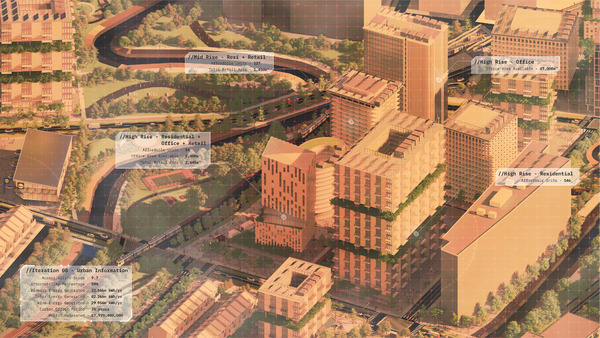Urban redevelopment is a cyclic process that upgrades deprived neighbourhoods to increase urban prosperity and improve the quality of life. However, an unintended consequence of this process is gentrification. Manchester City Council’s strategic planning team identifies the Eastern Gateway as a key location for Urban Redevelopment. Given the current demographic makeup of the area, this runs a high risk of undesirable aspects of gentrification. The thesis project explores how an urban redevelopment proposal can address both Socio-economic inclusivity and environmental sustainability towards a resilient future.
To address this issue, a computational tool was developed to analyse and create urban redevelopment schemes to improve socio economic inclusivity and environmental sustainability. The research on affordability positions the design problem and addresses it through hybrid buildings which integrate amenities within social housing. Further, three densities of development are utilised around transport hubs and attempt to reverse the historical propensity towards inequitable accessibility through high density/high cost/high amenity centres with gradual fall of the outer rings, by introducing a ‘mid-ring affordable zone’ with a concentration of amenities.
The computational tool is guided by various theories, urban block design rules and user parameter inputs.The tool was developed using various computational methods, mainly circle packing. We further coded our tool to analyse the generated iterations on three performance criteria - affordability, accessibility and sustainability.
One of the major outcomes of this project is an application tool that enables the users to view generated design iterations on the site, which can be compared against each other on an analytical and performance basis. Each iteration has a level of interactivity, giving the user an opportunity to interact with the urban and the building scale on site to view its performance and other specific metrics related to socio- economically inclusive and future zero-carbon cities.


